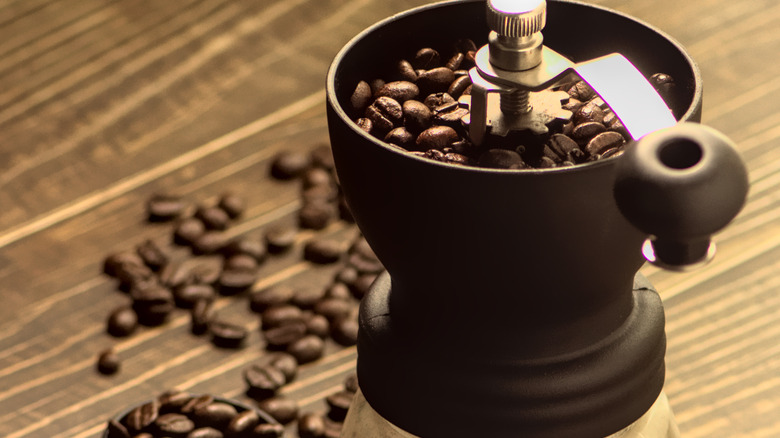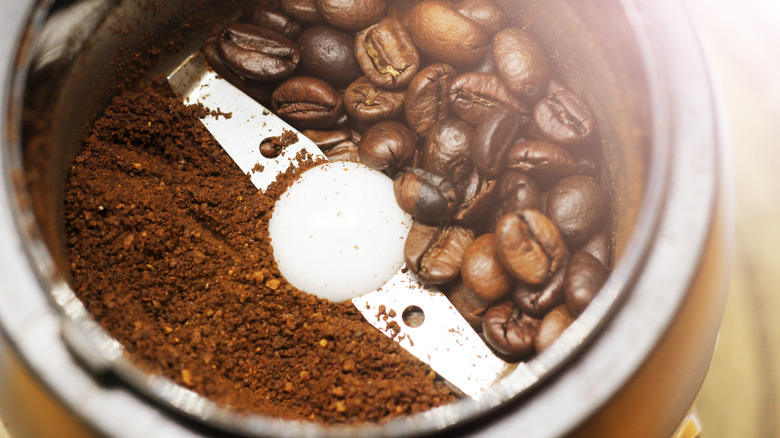When To Use Burr Vs. Blade Coffee Grinders
If you're not a regular coffee drinker, details like the roast level of coffee beans, the water temperature for brewing, or the type of grinder used may not seem significant. However, for connoisseurs attuned to these nuances, such aspects are crucial, particularly the grinder used for turning roasted beans into powder. Several reasons might sway you to grind your own beans at home rather than buying pre-ground coffee — fresher taste and better flavor extraction are just a few of the upsides.
When you're ready to invest in your first grinder, it's important to choose the right type. There are two main types of coffee grinders: blade and burr. Blade grinders are known for their ability to pulverize beans with speed and convenience, and they generally come with lower price tags. In contrast, burr grinders offer more control over the grind, produce consistently sized ground coffee, and tend to be more durable — but they take more effort, and cost more.
Burr coffee grinders offer more control
The most significant difference between a burr and a blade grinder lies in their grinding methods, which notably affects the flavor of the coffee they brew. Blade grinders, as implied by their name, use motorized blades to chop or slice coffee beans into tiny granules, similar to spice grinders and food processors. Conversely, a burr grinder crushes beans between two spinning burrs, the distance between which can be adjusted to control the grind size.
Blade grinders offer limited control over grind size and lack consistency, often resulting in a mix of coarse and finely ground coffee. This inconsistency is crucial because unevenly ground coffee leads to uneven flavor extraction, potentially resulting in bitter brews when using a blade grinder. Moreover, blade grinders can generate heat, which might unfavorably affect the coffee beans, degrading their aroma and flavor and leaving a burnt aftertaste.
If your priority is to maximize flavor extraction from your coffee beans, a burr grinder is the superior choice. However, if speed, affordability, and convenience are your main concerns, blade grinders are still effective appliances.
Other coffee grinder considerations
Several other factors should be considered when choosing between burr and blade coffee grinders, including whether they are manual or electric. Manual grinders require more time, patience, and effort, but are often cheaper. If you're seeking a quality burr grinder without a high price tag, a manual version might be a better option than an electric one. Additionally, electric burr grinders can be larger than blade grinders. If kitchen space is limited, a blade grinder may be more space-efficient.
When leaning towards a burr grinder, the material it's made from is another consideration. Ceramic burr grinders don't heat up as quickly as steel ones. They're also generally more durable, provided they aren't exposed to very hard substances. However, ceramic grinders can be more expensive. Noise level is also a significant factor: Blade grinders are known to be quite loud, while burr grinders are relatively quieter. Within burr grinders, a conical grinder typically makes less noise than a flat one. Consider these factors carefully before making your choice.



